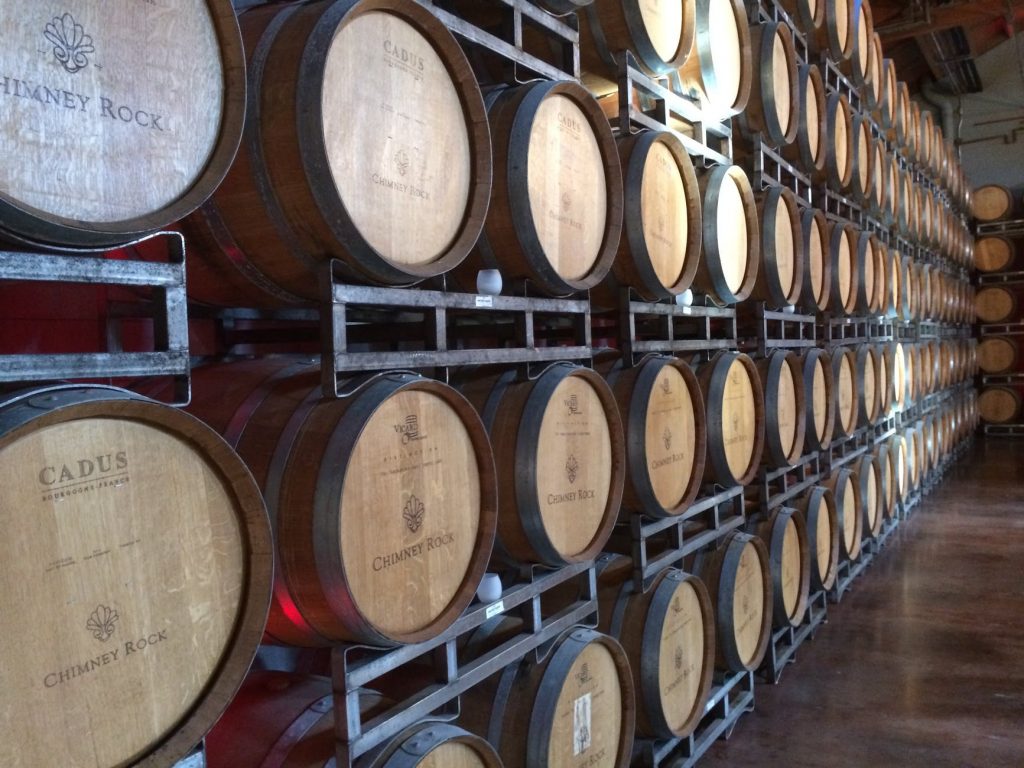Now that you’ve learned how to become a wine collector take care of those tasty tannins! Read on for everything you need to know about wine storage.
Estimated reading time: 5 minutes
Wine Storage Should Be Cool and Dry
You’ll want to keep conditions cool and dry for your wine. If you’re really serious about your wines, you can invest in a wine cooling system for about a thousand dollars. You should note that storage spaces are much more affordable. If you don’t have a climate controlled area, a cellar that offers a constant temperature will work. However, you can find ideal storage conditions in climate controlled storage units.
Place Bottles on Their Sides for Wine Storage
When you tuck your collection away, make sure you keep bottles on their sides. When the bottle is horizontal, the wine comes in contact with the cork, so it doesn’t dry out. We suggest investing in a quality wine rack that will hold all of your bottles.
Never Store Wine Where the Sun Will Hit It
The Sun’s UV rays are a real problem for wine storage, damaging its delicate aroma and fine flavor. That’s why storing wine far from any sunlight is a must. A wine closet, for example, would be a great idea, especially if your home has a lot of windows. A basement is a great place, too, as it’s dark and damp. However, we would suggest that you use a wine fridge even in the basement. That way, the humidity and temperature will stay constant all year.

Vibration is the Enemy of Proper Wine Storage
Did you know vibration isn’t good for wine? It’s not, though, because vibration can disturb the process of aging that wine needs to go through. A washing machine or dryer, for example, will churn the sediment in the wine bottle’s bottom. It might not be a big problem, but it’s a good reason not to store wine on or near your washing machine.
Don’t Store Wine in a Regular Fridge
Here’s the deal; your regular fridge is not a great place for wine storage. (Unless you only have a bottle or two you plan to drink sometime soon.) The reason why is that a regular refrigerator keeps food, including wine, very cold and dry. Also, in your fridge, cross-contamination from other foods is a problem. On the other hand, a wine fridge keeps your wine at the perfect temperature; 50-60˚F (10-15˚C). It can give your wine a taste or odor that’s…off.
Never Store Wine in the Attic
Wine storage in your attic might seem like a no-brainer, but many still do it (at their peril). It’s far too hot up there for your delicate and delicious wine! Plus, unless you have an entire stairway, going in and out of the attic is dangerous! One wrong move and a bottle, or a whole carton, of wine, could go kablooey! (And you with it!) If you have a fully finished attic with an entire stairway, though, it might be OK to store wine there. We’d suggest that, at the very least, you purchase a wine fridge if you want to use the attic.
No Refrigerator? Use Styrofoam Boxes
Like we mentioned above, you should protect your wine from temperature fluctuations while in storage. If you don’t have a wine fridge, you can keep your wine safe in styrofoam boxes. (Most big-box retailers have them, and they’re super cheap.) The styrofoam will keep the wine bottles at a steady temperature the entire year, as long as they’re not in the attic or garage. (The extreme temperature fluctuations are still too much, even for styrofoam.)

Temperature Controlled Units to Store Wine
In a SecurCare temperature-controlled storage unit, the temperature never gets too hot or cold. That’s good news for wine and good news for self-proclaimed sommeliers, too. Plus, you can use wine racks, shelving, or whatever other organization methods you choose in a storage unit. Also, getting in and out of a storage unit is easy. (No crawling around under the house!) The large roll-up garage doors make getting it easy and fast. In short, a temperature-controlled storage unit is an excellent choice if you have a medium or extensive wine collection.
Read more tasty tips on the SecurCare blog!



We published this post on 5/28/2016. We updated it on 12/16/2021.
